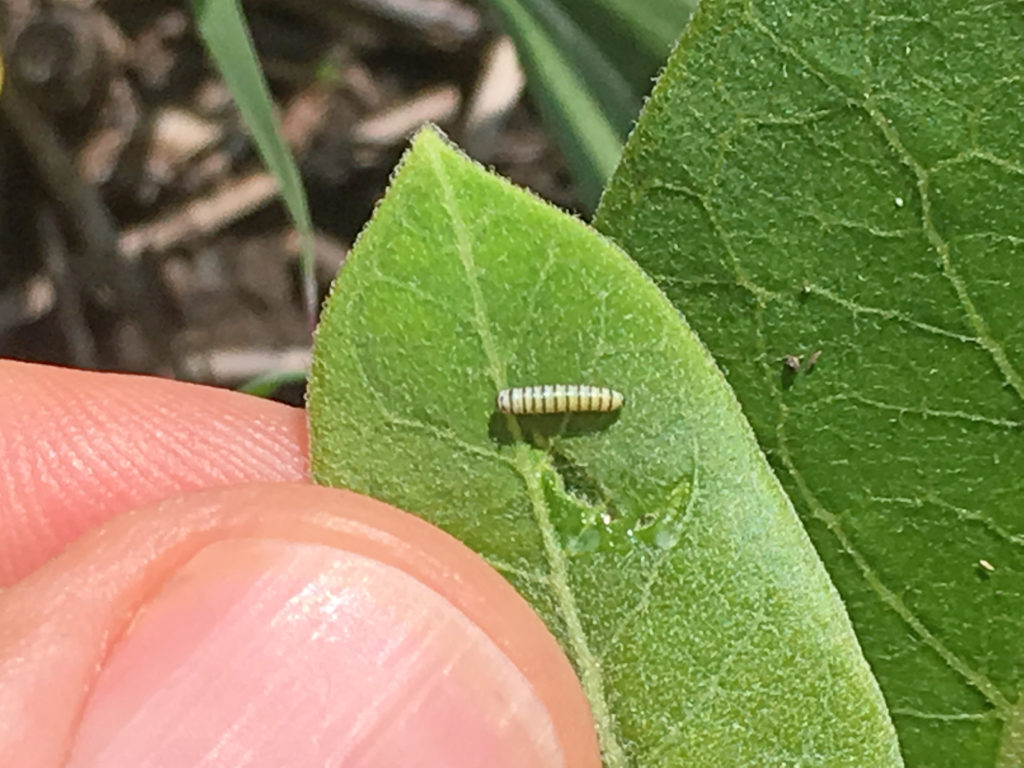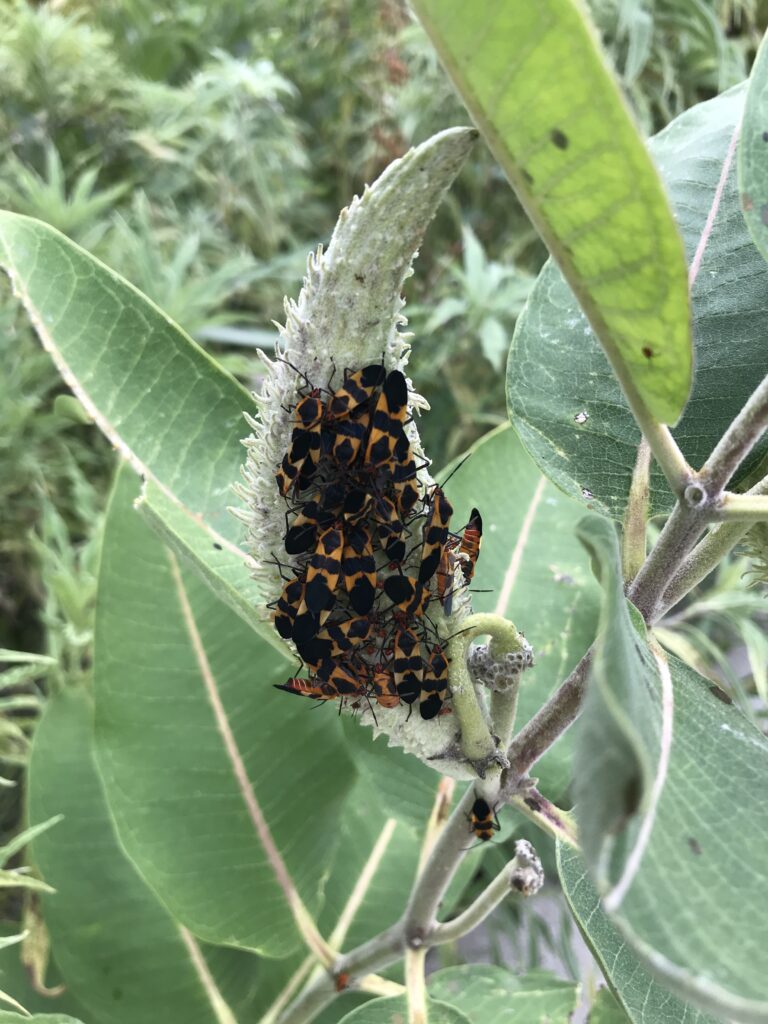I get a lot of calls and emails that start with “something is eating my plants!” Either frustrated or panicked, most view this development as a bad thing. To their surprise, I usually say “Congratulations!”. A bug can be a great thing.
The fact is, plants are meant to be eaten. Plants provide food for the rest of the living world, especially for the world’s insects. It is normal for the native animals of our area to nibble, chew, and sometimes completely defoliate plants. Humans forget this, much to the detriment of the biodiversity in our neighborhoods. Bugs are essential to life on earth, so we should be excited about feeding them!

Don’t Judge a Bug By Its Diet
I like to say Congratulations, not to be flippant, but to help people reframe the situation. I explain that it is very possible they are hosting a native butterfly, moth or beetle larvae. Holes in your Hibiscus can be a good thing! By investigating what exactly is lunching on your leaves, you begin to engage deeper with your garden and with the ecosystem at large. Look carefully before you spray a pesticide; you may find an interesting little friend. You may even be able to precisely identify the bug based on what plant it is eating.

A Funky (plant) Baseline
Plants are at the base of the food chain. They convert the most primitive form of energy – sunlight – into tangible, edible growth. This conversion of sunlight to green leaves allows everything in the food chain to function — bugs, rabbits, and deer eat the leaves, songbirds eat the bugs, snakes eat the bird eggs, coyotes or hawks eat the snake, and so on.
Plants are the foundation of a healthy ecosystem, and native plants are especially important. According to a 2018 study, “in areas made up of less than 70 percent native plant biomass, Carolina chickadees will not produce enough young to sustain their populations. At 70 percent or higher, the birds can thrive.”
Insects in our area have evolved to feed on and coexist with our native plants, and these insects feed everything above them in the food chain. If you find a bug eating your favorite plant, consider how important that little fella might be in terms of feeding the other animals in our ecosystem.

But it always recovers nicely ones they pupate and move on.
Doom and Gloom for Your Blooms?
The main concern is: will my plant recover? And, most of the time, the answer is yes. Remember, plants are meant to be eaten. They have evolved all sorts of clever ways to survive, and many can survive being eaten completely to the ground. Our Senna and partridge pea plants at the Arboretum become completely defoliated by Sulphur butterfly caterpillars every year. And yet, often they have enough energy to bloom and set seed by the end of the season. Checkerspot larvae absolutely shred the leaves of our coneflowers, but up they come next year, blooming happily.

Whatever you find eating your garden plants, remember to do your homework before taking action. Leave the pesticide on the shelf, and do some investigation instead! If you have aphids or spider mites in an infestation large enough to damage your plant, consider Safer Soap for a gentle approach. If you find a caterpillar, inch worm, or other larvae, it is likely not a cause for major concern or treatment.
